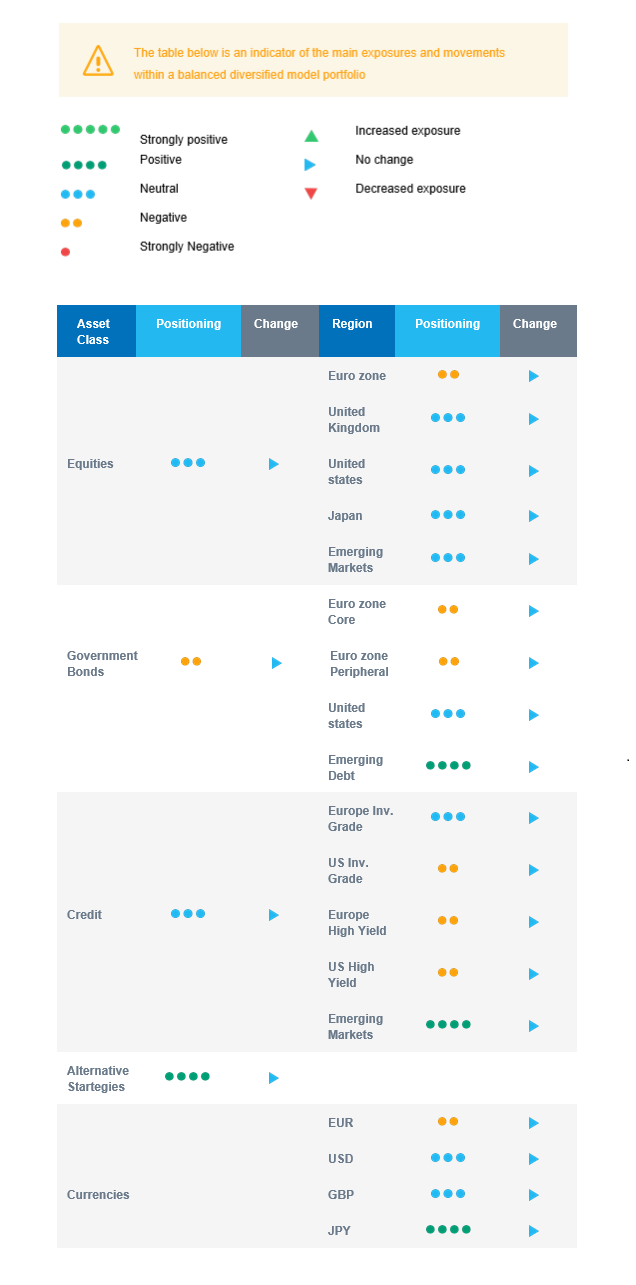Last week in a nutshell
- The US economy created 263K new jobs, bringing the unemployment rate to 3.5%, below a market expectation of 3.7%. Another sign that overall labour market conditions remained tight.
- OPEC+ agreed to sharply cut oil production, curbing supply whereas market is already tight. The decision led the White House to issue an open message of disappointment.
- Forty-four European Union leaders and neighbours from Britain to Turkey met in Prague to discuss security and energy emergencies whereas Russia's invasion of Ukraine continues. The summit was symbolic and aimed at underlining Moscow's isolation.
- The global manufacturing PMI dropped below the neutral level of 50.0 for the first time since June 2020. The euro zone and UK are seeing above average downturns, also linked to Europe's energy crisis. Meanwhile US producers reported a marginal return to growth. The deteriorating demand picture continued to be driven by a slump in global trade.
What’s next?
- Inflation will be in focus with the publication of data stemming from the US, the euro zone, Japan and China, highlighting the divergent stages of monetary policy tightening the countries are dealing with. The Bank of Japan is currently the only one bucking the trend.
- In the US, the Fed minutes from the September meeting are due as well as several speeches from Fed members. Soft data on consumer expectations, sentiment and current condition from the Michigan University will complete the picture.
- The UK will release several figures on GDP, labour market and industrial production data amid an uncertain macroeconomic context as the country is using both monetary and fiscal policy tools.
- Q3 earnings season is getting started with major US banks and consumer-focused companies.
Investment convictions
Core scenario
- The risks we previously outlined are starting to materialize and are now part of the scenario.
- As a result, our asset allocation remains rather prudent as central banks are committing for even higher rates for longer, leading us to keep a slightly shorter portfolio duration.
- The Fed continues its hiking cycle along with a quantitative tightening, i.e., a balance sheet reduction. In our best-case scenario, the Fed succeeds in a soft landing of the economy while avoiding a full-blown recession.
- Inflation is at highs in the euro zone, hitting businesses, consumers, and ECB policymakers alike. The ECB has made it clear that the only path forward is higher rates.
- Our equity allocation reflects the conviction that European equities are set to underperform in an environment of high inflation, a hawkish ECB and a sharp slowdown in economic growth. As a result, we expect more substantial earnings downgrades in the region than elsewhere. Given the unfavourable risk/reward, we have a negative stance on euro zone equities.
- While the outlook for global equities deteriorates as revenues, margins and, ultimately, profits could be revised down, we expect emerging market equities in Asia to outperform as valuation has become attractive while the region keeps superior growth prospects vs. developed markets.
Risks
- Upside risks include that central bank actions are nearly priced for peak hawkishness and weak sentiment and positioning. Further, governments in Europe are adding fiscal aid as the energy crisis deepens, which could mitigate its negative impact.
- Downside risks would be a monetary policy error via over-tightening in the US or a sharp recession risk via a deeper energy crisis in Europe.
- The war in Ukraine is ongoing and signs of discomfort with Moscow are growing in the international community.
- The threat of COVID-19, and its variants, remain as the virus keeps evolving and spreading at various speed throughout the world.
Cross asset strategy
- Our multi-asset strategy stays more tactical than usual and can be adapted quickly:
- Underweight euro zone equities, with a derivative strategy in place.
- Neutral UK equities, resilient sector composition and global exposure.
- Neutral US equities, with an actively managed derivative strategy.
- Neutral Emerging markets, but positive on Asian Emerging markets, expected to outperform as valuation has become attractive while the region keeps superior growth prospects vs. developed markets.
- Neutral Japanese equities, as accommodative central bank, and cyclical sector exposure act as opposite forces for investor attractiveness.
- Positive on sectors, such as healthcare, consumer staples and the less cyclical segments of the technology sector.
- Positive on some commodities, including gold.
- In the fixed income universe, we have tactically reduced our portfolio duration and are now slightly short duration.
- We continue to diversify and source the carry via emerging debt.
- In our long-term thematics and trends allocation: While keeping a wide spectrum of long-term convictions, we will favour Climate Action (linked to the energy shift) and keep Health Care, Tech and Innovation.
- In our currency strategy, we diversify outside the euro zone:
- We are long CAD and JPY and underweight EUR.
Our Positioning
We have a tactically shorter portfolio duration as growth has so far shown resilience while inflation continues to surprise on the upside, leading central banks to tighten even more. We remain overall neutral equities but underweight euro zone because of the unfavourable risk/reward ratio. We keep using derivatives. We added the JPY as we identified various strengthening drivers. We keep a slight overweight commodity currency via the CAD.

